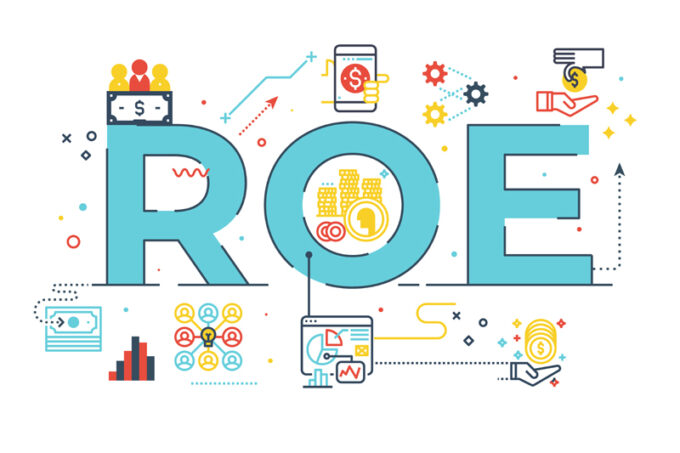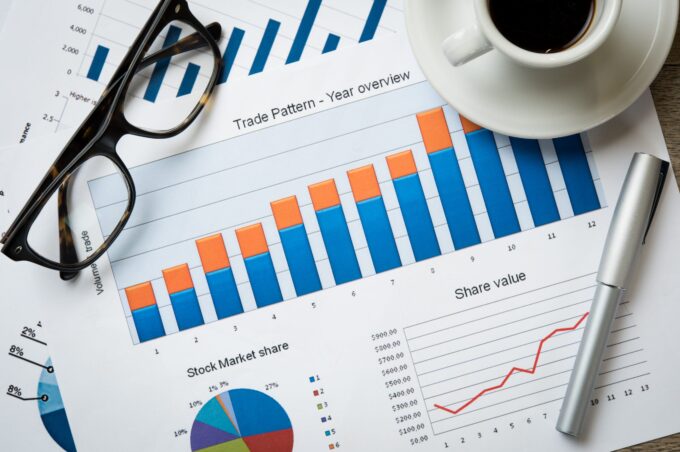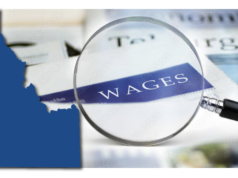Financial performance assessment refers to the process of evaluating a firm’s profitability, liquidity, solvency, efficiency, and investment potential. While these concepts may sound complex, they can be broken down into key financial metrics that provide a detailed look at a company’s performance. This article will delve into these essential metrics, offering you a comprehensive guide to assess a business’s financial health effectively.
Profitability Ratios
Profitability ratios, the primary indicators of a company’s ability to generate profit, offer a comprehensive look at a company’s income relative to its revenues, assets, and equity.
- Committed Annual Recurring Revenue (CARR)
CARR measures the annualized revenue that a company can expect based on the subscription contracts it has committed to over the next 12 months. It’s an indicator of the steady cash flow a company can predictably expect within the next year.
- Annual Recurring Revenue (ARR)
Annual Recurring Revenue (ARR) represents the value of the recurring revenue from your subscriptions, adjusted for a standard one-year period. Serving as a momentary capture of your company’s revenue, ARR provides an opportunity to gauge the effectiveness of your subscription-based or SaaS products in revenue creation.
While both these metrics, CARR and ARR, are essential for businesses with recurring revenue models, they serve slightly different purposes. Therefore, understanding the nuances between CARR vs ARR is key to accurately assessing the financial performance and prospects of businesses operating on recurring revenue models.
- Gross Profit Margin
Source: consulterce.com
The Gross Profit Margin is a financial metric that calculates the proportion of total revenue that remains after deducting the cost of goods sold (COGS). This ratio, expressed as a percentage, is obtained by dividing the Gross Profit by Revenue and then multiplying the result by 100. A higher gross margin implies that the company generates a significant portion of revenue from each unit sold after accounting for the direct costs of producing those goods or services. However, this does not account for other expenses like administrative costs or taxes.
- Operating Profit Margin
The Operating Profit Margin assesses a company’s operational efficiency. It measures the proportion of revenue left after subtracting both the COGS and operational expenses. The formula is (Operating Income / Revenue) x 100. A high operating profit margin indicates that the company can generate enough revenue to cover not only the direct costs of goods sold but also operating expenses like salaries, rent, and utilities.
- Net Profit Margin
The Net Profit Margin reflects the percentage of revenue that remains as net profit after all expenses have been deducted. It’s calculated as (Net Income / Revenue) x 100. It provides an overview of a company’s overall profitability after considering all business costs, including tax and interest expenses.
- Return On Assets (ROA)
Return on Assets (ROA) shows how efficiently a company is using its assets to generate profits. It’s calculated as (Net Income / Total Assets) x 100. A higher ROA indicates that the company is effective at using its assets to generate income. A lower ROA, on the other hand, could suggest management inefficiencies.
- Return On Equity (ROE)
Source: finrepo.fi
Return on Equity (ROE) serves as a pivotal financial metric that quantifies a company’s effectiveness in generating profit from its shareholders’ equity. Calculated by taking the net income and dividing it by shareholder’s equity, ROE offers an insight into the returns shareholders are earning on their investments.
Expressed as a percentage, the computation for ROE is (Net Income / Shareholder’s Equity) x 100. From a shareholder’s viewpoint, this ratio is an invaluable tool as it gauges the extent to which their investments are being profitably utilized by the company.
Liquidity Ratios

Liquidity ratios are essential metrics that evaluate a company’s ability to meet its short-term financial obligations. A company with good liquidity can efficiently pay off its short-term debts, which is a positive indicator of financial health.
- Current Ratio
The Current Ratio measures a company’s ability to pay off its current liabilities with its current assets. It’s calculated as Current Assets / Current Liabilities. A ratio of 1 or higher indicates that the company has enough assets to cover its short-term liabilities.
- Quick Ratio
The Quick Ratio, a rigorous measure of liquidity, gauges a company’s capacity to fulfill its short-term liabilities by examining its most liquid assets. It does this by subtracting inventories from current assets and subsequently dividing this figure by current liabilities, thereby providing an understanding of the company’s ability to meet immediate obligations without relying on the sale of inventory. The formula for this is (Current Assets – Inventories) / Current Liabilities. This approach is typically conservative as it takes into account the possibility that inventories might not be readily converted into cash.
Solvency Ratios

While liquidity ratios focus on a company’s short-term financial health, solvency ratios look at the bigger picture—they assess a company’s ability to meet its long-term obligations. These metrics are of particular interest to long-term creditors and bondholders.
- Debt To Equity Ratio
The Debt to Equity Ratio measures the financial leverage of a company. It compares a company’s total debt to its total equity. The formula is Total Debt / Total Equity. A higher ratio could mean that the company relies heavily on borrowed money to finance its operations, which could be a risk for investors and creditors.
- Debt Ratio
The Debt Ratio is another measure of a company’s leverage. It’s calculated as Total Debt / Total Assets. A higher debt ratio implies more of the company’s assets are financed by debt. On the other hand, a lower debt ratio indicates that a greater portion of the company’s assets are financed by equity.
Efficiency Ratios

Efficiency ratios reflect how well a company uses its assets and manages its liabilities. They can reveal the operational efficiency of a company, providing insights into the quality of management.
- Asset Turnover Ratio
The Asset Turnover Ratio is a measure that highlights the effectiveness of a company in using its assets to generate sales. This ratio is computed by dividing Sales by Total Assets. When the ratio is higher, it suggests that the company has been successful in deploying its assets to create revenue. On the other hand, a lower ratio might point to less efficient asset usage.
- Inventory Turnover Ratio
The Inventory Turnover Ratio measures how often a company sells and replaces its inventory over a given period. It’s calculated as the Cost of Goods Sold / Average Inventory. A higher inventory turnover ratio indicates efficient management of inventory, whereas a lower ratio could indicate excess inventory or inadequate sales.
- Receivables Turnover Ratio
The Receivables Turnover Ratio measures how effectively a company extends credit and collects debts from its customers. The formula is Net Credit Sales / Average Accounts Receivable. A higher ratio implies that receivables are collected more frequently throughout the period.
Investment Ratios
Investment ratios are used by investors to assess a company’s financial performance and determine its investment potential. These metrics are often used to compare companies within the same industry.
- Earnings Per Share (EPS)
Earnings Per Share (EPS) measures the portion of a company’s profit allocated to each outstanding share of common stock. It’s calculated as Net Income / Number of Outstanding Shares. A higher EPS could suggest more value because investors would receive more income for each share of stock they own.
- Price/Earnings Ratio (P/E Ratio)
Source: forbes.com
The Price-to-Earnings (P/E) Ratio provides an evaluation of the relationship between a company’s stock price and its earnings per share. When a P/E ratio is high, it may signify that the stock is expensive compared to its earnings, implying potential overvaluation. On the other hand, a low P/E ratio could suggest that, compared to its earnings, the stock is priced lower, possibly indicating undervaluation.
- Dividend Yield
The Dividend Yield measures how much a company returns to its shareholders in dividends. It’s calculated as Annual Dividends Per Share / Market Price Per Share. A high dividend yield may attract investors looking for regular income.
Final Thoughts
These financial metrics provide a well-rounded perspective on a company’s financial performance. However, these metrics should not be analyzed in isolation but should be used collectively to get a comprehensive view. They should also be evaluated in the context of a company’s industry, competitors, and market conditions for a more accurate assessment. Understanding these financial metrics can assist stakeholders in making informed decisions about a company’s financial health and future prospects.













